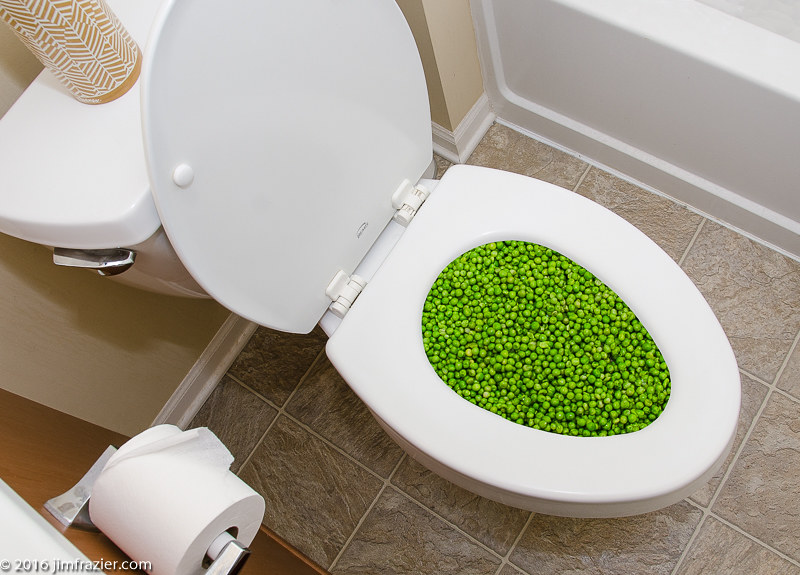Are You Able to Dispose of Food Waste in the Toilet?
Hire A ProThis post on the next paragraphs involving Flushing Food Down the Toilet? is unquestionably entertaining. Read it yourself and figure out what you think of it.

Introduction
Many people are commonly faced with the predicament of what to do with food waste, particularly when it comes to leftovers or scraps. One common concern that arises is whether it's all right to flush food down the bathroom. In this short article, we'll look into the reasons why individuals might consider flushing food, the repercussions of doing so, and alternative techniques for correct disposal.
Reasons that individuals might take into consideration flushing food
Lack of understanding
Some people might not know the possible harm caused by flushing food down the toilet. They may mistakenly believe that it's a harmless practice.
Benefit
Flushing food down the toilet may look like a quick and simple service to dealing with unwanted scraps, especially when there's no neighboring garbage can offered.
Negligence
Sometimes, individuals may merely choose to flush food out of large laziness, without taking into consideration the effects of their activities.
Repercussions of flushing food down the toilet
Environmental influence
Food waste that winds up in waterways can contribute to air pollution and harm water ecosystems. Furthermore, the water made use of to purge food can stress water sources.
Plumbing problems
Flushing food can cause clogged pipes and drains pipes, creating pricey pipes fixings and inconveniences.
Kinds of food that ought to not be purged
Fibrous foods
Foods with fibrous appearances such as celery or corn husks can get entangled in pipelines and trigger clogs.
Starchy foods
Starchy foods like pasta and rice can soak up water and swell, leading to clogs in pipelines.
Oils and fats
Greasy foods like bacon or cooking oils ought to never ever be flushed down the commode as they can strengthen and cause obstructions.
Proper disposal approaches for food waste
Using a garbage disposal
For homes equipped with waste disposal unit, food scraps can be ground up and purged via the pipes system. However, not all foods are suitable for disposal in this way.
Recycling
Particular food product packaging products can be reused, lowering waste and reducing environmental impact.
Composting
Composting is a green means to get rid of food waste. Organic materials can be composted and used to enrich dirt for gardening.
The importance of correct waste monitoring
Minimizing environmental injury
Proper waste monitoring methods, such as composting and recycling, assistance lessen contamination and protect natural deposits for future generations.
Protecting plumbing systems
By preventing the technique of flushing food down the bathroom, house owners can protect against pricey pipes repair services and keep the stability of their plumbing systems.
Conclusion
To conclude, while it may be alluring to purge food down the toilet for convenience, it is very important to comprehend the potential effects of this activity. By taking on appropriate waste administration techniques and taking care of food waste sensibly, individuals can add to healthier pipes systems and a cleaner atmosphere for all.
FLUSH FOOD DOWN THE TOILET?
FLUSHING FOOD CAN CAUSE BLOCKED DRAINS IN YOUR HOME
All of the plumbing fixtures in your home are connected to the same sewer pipe outside of your home. This outdoor sewer pipe is responsible for transporting all the wastewater from your home to the Council sewer mains. Even small pieces of food that go down the kitchen sink can cause problems for your sewer. It should therefore be obvious that flushing larger bits of food, such as meat, risks a clog in either the toilet itself or the sewer pipes. Flushing greasy food is even more problematic because oil coagulates when it cools, coating the interior lining of your pipes.
THE TOILET IS NOT A BIN
Food isn’t the only thing that people shouldn’t be flushing down the toilet. People use the toilet to dispose of all kinds of things such as tampons, makeup wipes, dental floss, kitty litter and even underwear. Water goes to great lengths to educate residents about the high costs and stress placed on wastewater treatment systems simply from people flushing the wrong stuff down the toilet. It costs taxpayers millions of dollars each year, and homeowners thousands in blocked drain repairs.
FLUSHING FOOD IS A WASTE OF WATER
Flushing food is a waste of our most precious resource - water. In June this year Level 1 water restrictions were introduced to protect water supply from drought conditions. Much of New South Wales continues to be affected by prolonged drought with recent figures revealing up to 97 per cent of the state remains in drought. Depending on whether you have a single or dual flush toilet, every single flush uses between five and 11 litres of water. In the current climate this is a huge amount of water to be wasting on flushing food that should be placed in the bin (or better yet, the compost).
https://www.jabplumbingsolutions.com.au/blog/can-you-flush-food-down-the-toilet

Hopefully you enjoyed our topic on What Can Happen If You Flush Food Down the Toilet?. Thank you so much for taking a few minutes to read through our article post. Sharing is caring. You never know, you could be doing someone a favor. I take joy in your readership.
Top Article